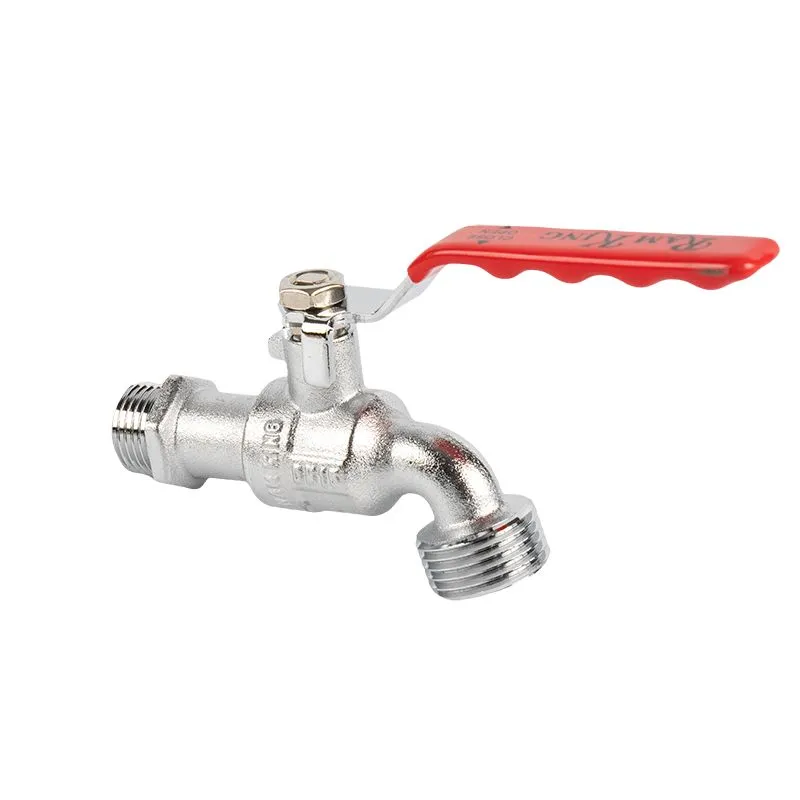Brass Bibcock: Material and Performance Analysis
2024-11-06
A brass bibcock is a type of valve typically used for controlling the flow of water in plumbing systems. It’s commonly found in applications such as outdoor faucets, garden taps, irrigation systems, and washing stations. Bibcocks are designed for both residential and commercial use, and brass, as the material of choice, plays a crucial role in the functionality, durability, and performance of these devices.
In this analysis, we’ll explore the material properties of brass and how they contribute to the overall performance of a brass bibcock.
1. Material Composition of Brass
Brass is an alloy of copper and zinc, with the proportions of these metals varying to produce different types of brass. The two most common types of brass used in bibcocks are:
- Lead-Free Brass: This is becoming more popular in plumbing fixtures due to health concerns associated with lead. It generally consists of copper (around 58–70%), zinc (around 2–6%), and small amounts of other metals like tin, nickel, or iron. Lead-free brass is safe for potable water systems.
- Standard Brass: This brass typically contains a higher percentage of lead (up to 8%), which can give the material improved machinability but is not recommended for drinking water applications due to lead’s toxicity.
The alloy composition of brass is critical for achieving the desired balance of strength, corrosion resistance, and ductility.

2. Performance Characteristics of Brass Bibcocks
a. Corrosion Resistance
One of the key benefits of using brass in bibcocks is its corrosion resistance. Brass is inherently more resistant to corrosion than other metals like steel and iron, making it well-suited for outdoor and wet environments. The material forms a protective layer on its surface that guards against rust, making it ideal for plumbing systems where exposure to moisture is frequent.
- Resistance to Rust: Unlike steel or iron, brass does not rust. It forms a patina over time, which actually helps protect it further.
- Resistance to Pitting: Brass bibcocks, especially lead-free brass, are highly resistant to pitting corrosion, which is common in plumbing systems exposed to water with high acidity or chlorides.
This corrosion resistance significantly extends the lifespan of brass bibcocks, reducing the need for frequent replacements and maintenance.
b. Durability and Strength
Brass is a strong and durable material that can withstand high-pressure water systems. The combination of copper and zinc in the alloy provides brass with enhanced tensile strength and resilience.
- Pressure Tolerance: Brass bibcocks can handle high-pressure environments, which is important in systems that involve fluctuating or high water pressure.
- Impact Resistance: Brass is less likely to crack or shatter under impact compared to materials like plastic or cast iron.
- Longevity: A well-made brass bibcock, especially in a lead-free brass formulation, can last for several years, even decades, when properly maintained.
c. Resistance to Scale Build-Up
Brass is resistant to scale formation compared to other materials like copper or iron. When used in systems with hard water (water with high mineral content), brass bibcocks are less likely to accumulate mineral deposits like lime scale. This is important as scale buildup can impair the performance of the valve by clogging the internal components.
d. Thermal Conductivity
Brass has good thermal conductivity, meaning it can withstand changes in temperature without becoming brittle or losing structural integrity. This is particularly beneficial in applications where temperature fluctuations are common, such as outdoor faucets exposed to winter cold or summer heat.
- Freeze Resistance: Brass bibcocks are less likely to crack under freezing temperatures compared to plastic alternatives.
- Heat Resistance: They can also tolerate hot water without degrading, making them ideal for use in both hot and cold water systems.
e. Aesthetic Appeal
Brass has an attractive golden finish, which adds an aesthetic value to plumbing installations, especially in visible areas like gardens or patios. Over time, brass develops a unique patina, giving it a distinct character. The visual appeal of brass can be a selling point in residential or decorative applications.
f. Smooth Operation
Brass bibcocks are known for their smooth valve operation. The material's machinability allows manufacturers to create tight, precise threads for valve stems, which leads to a smooth turning mechanism for the handle. This contributes to the ease of use and long-term functionality of the bibcock.
- Non-Sticking: Unlike some metals, brass parts do not stick or seize easily, even in damp environments.
- Long-Lasting Seals: Brass bibcocks often incorporate rubber seals that, combined with the smooth brass components, provide a tight seal that prevents leaks over time.
3. Benefits of Brass Bibcocks in Plumbing Systems
a. Reliability in Outdoor and Harsh Environments
Brass bibcocks are highly reliable for outdoor applications, especially in areas where the faucet is exposed to the elements. Whether it’s extreme heat, cold, or high moisture conditions, brass can withstand these elements better than plastic or other metals.
b. Maintenance and Repairs
Brass bibcocks require minimal maintenance. The corrosion resistance and durability of the material mean that the valve’s internal components last longer, reducing the frequency of repairs or replacements. Additionally, brass is easy to repair, and parts like washers and stems can be replaced without needing to replace the entire bibcock.
c. Environmental Sustainability
Lead-free brass is an eco-friendly choice compared to other metals, as it does not release harmful substances into the environment. When a brass bibcock reaches the end of its life, it is recyclable, further adding to its sustainability.
4. Potential Limitations of Brass Bibcocks
a. Price
Brass bibcocks are generally more expensive than their plastic counterparts. However, the higher upfront cost is often offset by the longer lifespan and lower maintenance needs over time.
b. Weight
Brass is heavier than plastic, which could be a concern if the bibcock is part of a portable installation. While the weight gives it durability, it may not be ideal in situations where lightweight materials are needed.
5. Conclusion
Brass bibcocks are an excellent choice for plumbing systems due to their combination of strength, corrosion resistance, thermal stability, and aesthetic appeal. They offer long-term performance in both residential and commercial settings, particularly in outdoor applications. The material’s resilience to environmental factors, such as moisture and temperature fluctuations, ensures that brass bibcocks provide reliable and durable service over time.
Although they come at a higher initial cost compared to plastic alternatives, their superior performance and long lifespan make them a worthwhile investment. Additionally, with the increasing demand for lead-free brass due to health concerns, brass bibcocks provide a safe and eco-friendly solution for plumbing systems that require both performance and sustainability.


